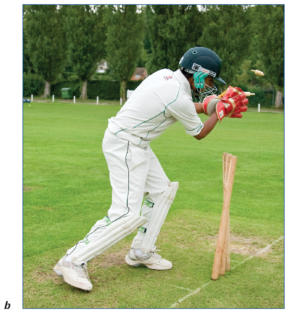Tips to enhance your stumping abilities
This is an excerpt from Cricket: Steps to Success by Ralph Dellor.
Stumping
Stumping marks a quality wicket-keeper. The batsman plays and misses while shifting his foot a hair's breadth out of his ground. In a flash, the wicket-keeper takes the ball and whips off the bails, and another wicket has fallen. Such success demands a high level of concentration and composure. If the wicket-keeper gets too excited about a stumping opportunity, he will almost certainly miss it.
The ball has to pass the stumps before you are permitted to touch it, provided it has not come off the bat or the batsman. That is where the composure comes in: do not grab at the ball as soon as you realise there is a chance. Get your gloves into position, allow the ball to come to you and only then move your hands towards the bails. Until you hold the ball, stumping is not on the agenda.
Gather Ball
- Gather ball once it passes stumps
- Lean head and body towards wicket

Remove Bails
- Take off bails before batsman can regain his ground

Misstep
When going for a stumping, you frequently drop the ball.
Correction
You are snatching at the ball rather than watching the ball right into your gloves before taking them to the bails.
It was noted earlier that when you stand up to the wicket, you should always be able to reach the bails from where you take the ball. That applies to the distance you stand back behind the stumps, but the width of the ball determines how far wide of the stumps you must go. Even so, you can help yourself by leaning in towards the stumps as you begin to bring the ball back to the bails. Even when the ball is wide of leg stump, watch its line and trajectory for as long as possible before it is hidden by the batsman's body. Then step across to the leg side as the ball reappears, watch it into your gloves and, leaning into the stumps, whip the bails off. That is a classical piece of wicket-keeping!
More Excerpts From Cricket: Steps to SuccessSHOP

Get the latest insights with regular newsletters, plus periodic product information and special insider offers.
JOIN NOW


